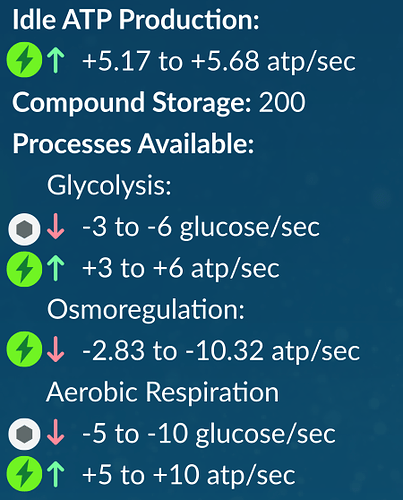Yeah, I agree that artificially capping the size like that isn’t quite ideal, and I feel a size limit should be more clearly due to how the processes work, not because of some limit the devs decided upon. Maybe in the future you could even improve your cell’s Glycolysis a little so that it allows for more complexity (though of course Aerobic Respiration should always be a pretty big improvement)
As for reproduction, if we show cell statistics in the editor we could show idle ATP production for both normal size and about-to-reproduce size, assuming calculating all that every time the cell is updated isn’t too difficult. Perhaps if either of them are in the negatives, the game could give a warning popup when the player tries to save, prompting them to either rethink their design or confirm their changes.
(These are just numbers I made up, but it shows what I mean)
And of course we have to also consider how many compounds these processes are using in comparison to how much the cells can store. For instance, the cell described by the statistics above would use up all of its Glucose (assuming its vacuoles were totally full) in only 12 and a half seconds… oops. In the discord, you also suggested that ATP should act as more of a “stamina” bar, which I thought was interesting and a nice way to differentiate it from Glucose.
Perhaps someone could make a simple prototype that lets you test out and tweak a cell’s processes in a closed environment. I don’t have any experience with programming at all though, but I suppose I could look into it
